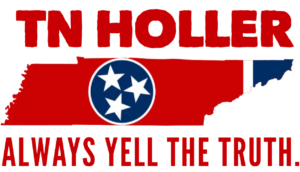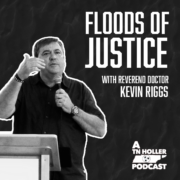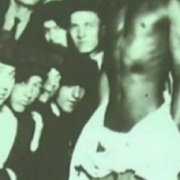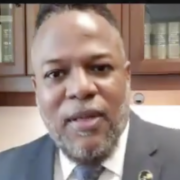“AMERICA KNEW”
(Police Brutality Videos Are Not An Excuse, ESPECIALLY IN TENNESSEE)
By Betsy Thorpe
“Thank Goodness Everyone Has Cell Phones Now and Are Recording Acts of Vigilantism and Police Brutality, because now we see it, so now we know, and now we can change things.”
At least, that seems to be the prevailing opinion of many people.
And while I’m glad white people are now taking police violence against black people seriously, how can you help change the future if you don’t know history, or if you don’t trust what the victims are saying about an evil you are trying to eradicate?
Throughout our history, white people have privileged myths propagated by white culture over the voices and experiential knowledge of Black people.
Even now, I see this new narrative about the prevalence of video developing to explain why white people have remained clueless about what has been happening to Black people.
That’s a cop-out. It’s a false narrative that white people did not know how bad things were for Black people prior to cell phones and social media.
Take the case of Ell Persons, a 52-year-old black woodcutter from Memphis, Tennessee who was lynched on May 22, 1917 after being accused of killing a 15-year-old white girl. A detailed eye-witness account of his torture and execution was picked up by the Associated Press and published in newspapers throughout the country.
People from Washington D.C. to San Francisco were shocked by the story that appeared on the pages of their local newspaper.
One widespread misconception about Jim Crow era lynchings is that they were spur of the moment events, conducted at night, by masked good ole’ boys on horseback, brandishing jugs of whiskey, as they take a victory lap around a hanging tree after watching their victim die. As evil as that image is, what really happened is far more dangerous and disturbing.
The real masterminds of terror created a system of racially motivated violence to keep Black people enslaved through fear. They were elected officials, judges, professionals, business leaders, clergymen and educators. The system relied heavily on the cooperation of law enforcement officers.
Elle Persons was not lynched at night. He was not hung from a tree.
No.
He was the main attraction in a public spectacle, planned by some of the most prominent men in Memphis. At 9:30 in the morning of May 22, 1917, more than fifteen thousand sightseers and revelers cheered when he was chained to a tree, doused in oil, and burned alive.
From the year 1882 through 1968 at least 3,446 Black men, women and children were lynched in the United States.
What is so striking to me is how similar the national reaction to Ell Person’s lynching is to the George Floyd murder 130 years later.
One eyewitness recorded Floyd’s arrest and murder with a cell-phone camera. The person who recorded the murder captured the sight of three other officers standing by and doing nothing during the eight minutes and forty-six seconds George Floyd struggled to stay alive.
At least one reporter was at Person’s murder, noting all the witnesses and recording in words for the whole nation to read how Persons died.
The first Tennessee branch of the NAACP was established in Memphis on June 6, just two weeks after Ell Persons was lynched. In the months that followed national membership in the organization increased ten-fold, from a group of 9,000 members to a force 90,000 strong. Similarly, anger over the murder of George Floyd sparked mainstream support and enthusiasm for the Black Lives Matter movement. Calls for the arrest of all four officers and demands for police reform was immediately heard from across the land.
From late May of 1917 through July of that year protests, and riots erupted in racially divided cities. The deadliest of the race-related riots was a series of fiery outbreaks in East St. Louis Illinois. The first disturbances occurred in late May just one week after the lynching in Memphis. They finally ended on July 2. An estimated two hundred and fifty Black people were killed in the East St. Louis riots.
On July 28 of 1917, the NAACP organized the Silent Protest Parade. Approximately ten thousand Black men, women and children marched along Fifth Avenue in New York City to protest lynchings and other acts of discrimination and oppression inflicted against Black people in America. It was the largest mass demonstration for Civil Rights the country had ever seen.
The wave of protests and marches that continue to surge across the nation since the murder of George Floyd mirrors what happened after the lynching of Ell Persons in 1917.
As evidenced with the murder of Rayshard Brooks in Atlanta by a police officer last week, certain officers feel no matter how many people are watching they are above the law and that it is safe for them to use excessive force. It was the same in 1917, when self-appointed law and order vigilantes and the law enforcement officers who helped them knew they were safe to use third degree tactics to torture and kill in public.
Especially in the state of Tennessee.
The protests against racially motivated violence in Tennessee carried on through the end of 1917 and into the beginning of the new year as two more barbaric lynchings stained the reputation of the state. Reports that on Sunday December 2 a Black man named Lation Scott was mutilated and burned at the stake in front of white Sunday School children made national news. Two months later, on February 8, near the small town of Estill Springs another Black man named Jim Mcllherron was burned alive in front of a crowd of five thousand onlookers, some coming from as far as fifty miles away just to watch him suffer and die.
Public fury was so great after Estelle Springs that one syndicated newspaper reporter was compelled to pen a blistering condemnation of the state of Tennessee:
“Americans who are denouncing the Prussian Huns as the most cruel and inhuman murderers should take a squint at Tennessee. No diabolical Hun ever did anything worse than torture a human being with hot irons and burn him at the stake.”
In a silent march in Nashville on February 19, 1918 two thousand Black men marched four abreast from the YMCA on Fourth Avenue up what is now Charlotte Avenue to Capitol Hill where three of their leaders entered the Capitol building. The leaders met Governor Rye and other elected officials. One leader told the assemblage that the Black man in the South was the most endangered being alive, another stated that “a man’s chance is all that is wanted.” But it was one plea to the governor of Tennessee that most resembles the demands we hear from activists today.
They petitioned the governor to do something about the official dereliction of law enforcement and allow officers of the law to be held accountable for participating and or enabling the murder of Black people in Tennessee.
The press was present during this meeting between Black leaders and the Governor of Tennessee. A transcript of their dialogue was printed on the pages of both the Nashville Banner and the Nashville Globe.
So, as you can see, acts of racially motivated violence have been reported time and again by whatever media was available at the time. Right-minded people have sounded the alarm. Over and over. They have marched, protested, and held public vigils for more than a hundred years.
So, while it is quite true that “this has been going on forever”, and it is also true that “we now have phone cameras to record it,” it’s not true that we didn’t know.
America knew.
And it continued to know throughout the twentieth century. Funereal photos in Jet Magazine of Emett Till’s brutalized body lying in his coffin, news stories of young Black people in the Children’s March in Birmingham Alabama being attacked by dogs and with firehoses, live television coverage of the wake after Dr. King’s assassination, the list goes on. Sadly, there are just too many names to name.
What bothers me about the “now is different just because it is recorded” false narrative is that it implies that if we had only known, we would have done something. But that is simply not true, because we did know.
History teaches me to be wary of the assumption that this time will be different. If we cannot own our responsibility for not having effected change when we knew about it before, why should we assume that this time will be different?
We must be much more honest with ourselves about our failings to fix things when we knew about them before, in order to be more determined and effective in our efforts this time around.
—-
Betsy Thorpe is a member of the Nashville Historic, Inc, the Tennessee Supreme Court Historical Society, and Power Together Tennessee. Betsy is also part of the national criminal justice reform organization REFORM Alliance and is an active honorary member of the International Society of Women Educators, Delta Kappa Gamma.
Betsy works part time as a legal research assistant. She conducts research for a small criminal defense law firm that serves some of the most vulnerable and underrepresented populations in rural Tennessee.



